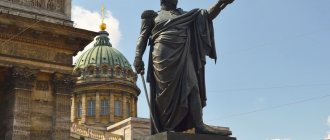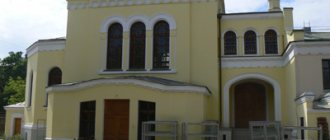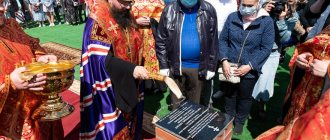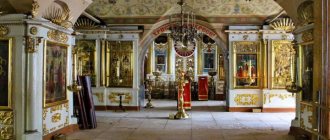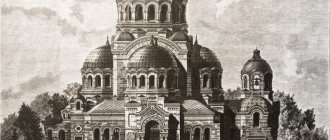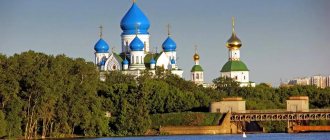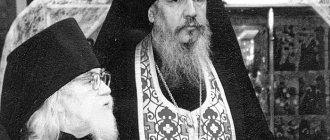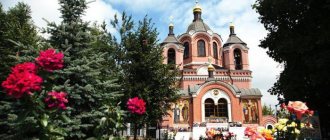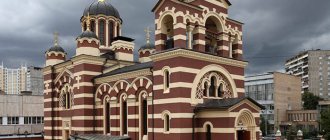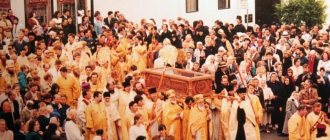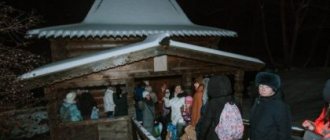Mir
Germany Baden-Württemberg Temple of the Icon of the Mother of God “The Sign” Kursk-Root (Ulm) Map is loading…
{"format":"leaflet","minzoom":false,"maxzoom":false,"limit":50,"offset":0,"link":"all","sort":[""], "order":[],"headers":"show","mainlabel":"","intro":"","outro":"","searchlabel":"\u2026 \u0441\u043b\u0435\ u0434\u0443\u044e\u0449\u0438\u0435 \u0440\u0435\u0437\u0443\u043b\u044c\u0442\u0430\u0442\u044b","default":"","import-annotation":false,"width ":"auto","height":"350px","centre":{"text":"","title":"""link":"""lat":48.3983410000000020545485313050448894500732421875,"lon": 9.9945930000000000603677108301781117916107177734375,"icon":""},"title":"","label":"","icon":"","lines":[],"polygons":[],"circles":[ ],"rectangles":[],"copycoords":false,"static":false,"zoom":8,"defzoom":14,"layers":["OpenStreetMap"],"image layers":[] ,"overlays":[],"resizable":false,"fullscreen":true,"scrollwheelzoom":true,"cluster":false,"clustermaxzoom":9,"clusterzoomonclick":true,"clustermaxradius":80, "clusterspiderfy":true,"geojson":"","clicktarget":"","showtitle":true,"hidenamespace":false,"template":"","userparam":"","activeicon": "","pagelabel":false,"ajaxcoordproperty":"","ajaxquery":"","locations":[{"text":"\u003Cb\u003E\u003Ca href=\"/palomnik/%D0% A5%D1%80%D0%B0%D0%BC_%D0%B8%D0%BA%D0%BE%D0%BD%D1%8B_%D0%91%D0%BE%D0%B6%D0%B8% D0%B5%D0%B9_%D0%9C%D0%B0%D1%82%D0%B5%D1%80%D0%B8_%C2%AB%D0%97%D0%BD%D0%B0%D0% BC%D0%B5%D0%BD%D0%B8%D0%B5%C2%BB_%D0%9A%D1%83%D1%80%D1%81%D0%BA%D0%BE-%D0%9A %D0%BE%D1%80%D0%B5%D0%BD%D0%BD%D0%BE%D0%B9_(%D0%A3%D0%BB%D1%8C%D0%BC)\» title= \u0425\u0440\u0430\u043c \u0438\u043a\u043e\u043d\u044b \u0411\u043e\u0436\u0438\u0435\u0439 \u041c\u0430\u0442\u0435\u04 40\u0438\u00ab\u0417\u043d \u0430\u043c\u0435\u043d\u0438\u0435\u00bb \u041a\u0443\u0440\u0441\u043a\u043e-\u041a\u043e\u0440\u0435\u043d\u043d\u043e\u 0439 (\u0423\u043b\u044c \u043c)\»\u003E\u0425\u0440\u0430\u043c \u0438\u043a\u043e\u043d\u044b \u0411\u043e\u0436\u0438\u0435\u0439 \u041c\u0430\u0 442\u0435\u0440\u0438\ u00ab\u0417\u043d\u0430\u043c\u0435\u043d\u0438\u0435\u00bb \u041a\u0443\u0440\u0441\u043a\u043e-\u041a\u043e\u0440\u0435\u043 d\u043d\u043e\u0439 (\ u0423\u043b\u044c\u043c)\u003C/a\u003E\u003C/b\u003E\u003Chr /\u003E\u003Ca href=\"/palomnik/%D0%A1%D0%B2%D0%BE%D0%B9 %D1%81%D1%82%D0%B2%D0%BE:%D0%90%D0%BD%D0%BD%D0%BE%D1%82%D0%B0%D1%86%D0%B8% D1%. 0410 \u043d\u043d\u043e\u0442\u0430\u0446\u0438\u044f\u003C/a\u003E: »'\u0425\u0440\u0430\u043c \u0438\u043a\u043e\u043d\u044b \ u0411\u043e\u0436\ u0438\u0435\u0439 \u041c\u0430\u0442\u0435\u0440\u0438 \u00ab\u0417\u043d\u0430\u043c\u0435\u043d\u0438\u0435\u00bb \u041a\u04 43\u0440\u0441\u043a\u043e- [[\u0427\u0430\u0441\u043e\u0 432\u043d\u044f\u043c \u0443\u0447\u0435\u043d\u0438\u043a\u043e\u0432 \u0412\u0430\u043b\u0435\u043d\u0442\u0438\u043d\u0430 \u0438 \u041f\u0430 \u0441\u0438\u043a\u0440\u0430 \u0442\u0430 (\u0423\u043b\u044c\u043c)|\u0447\u0430\u0441\u043e\u0432\u043d\u0435\u0439 \u043c\u0443\u0447\u0435\u043d\u043 8\u043a\u043e\u0432\ u0412\u0430\u043b\u0435\u043d\u0442\u0438\u043d\u0430 \u0438 \u041f\u0430\u0441\u0438\u043a\u0440\u0430\u0442\u0430]] \u0441 \u043e\u0441\u0442\u0430\ u0432\u043b\u044f\u0435\u0442 \u043f\u0440\u0438\u0445\u043e\u0434 \u043c\u0443\u0447\u0435\u043d\u0438\u043a\u043e\u0432 \u 0412\u0430\u043b\u0435\u043d\ u0442\u0438\u043d\u0430 \u0438 \u041f\u0430\u0441\u0438\u043a\u0440\u0430\u0442\u0430 \u0432 \u0433\u043e\u0440\u043e\u0434\ u0435\u0423\u043b\u044c\u043c\ u0435.","title":"\u0425\u0440\u0430\u043c \u0438\u043a\u043e\u043d\u044b \u0411\u043e\u0436\u0438\u0435\u0439 \u041c\u0430\u0442\ u0435\u0440\ u0438 \u00ab\u0417\u043d\u0430\u043c\u0435\u043d\u0438\u0435\u00bb \u041a\u0443\u0440\u0441\u043a\u043e-\u041a\u043e\u0440\u04 35\u043d\u043d\u043e\u0439 (\u0423\u043b\u044c\u043c)","link":"""lat":48.3983410000000020545485313050448894500732421875,"lon":9.9945930000000000603677108301781 117916107177734375,"icon":""}],,"imageLayers":[]}
48.398341; 9.994593
Germany, Baden-Württemberg, Alb-Donau-Kreis, Blaustein, Ulm, Judenhof, 9
Baden-Württemberg
Germany
Telephone:
+ 49 (0)731 — 184 91 65
Email:
; [email protected] (parish rector, Abbot Maxim (Schmidt))
Temple of the Icon of the Mother of God “The Sign” Kursk-Root
together with the chapel of the martyrs Valentin and Pasikrates, it forms the parish of the martyrs Valentin and Pasikrates in the city of Ulm.
History[edit]
The history of the Russian Orthodox community in Ulm begins in the first post-war years. Hundreds of believers, since 1948, come to the chapel of St. Valentine, provided by the municipal authorities of the city to the Russian Orthodox Church for worship, in search of God and faith, in search of compassion and warmth.
The Ulm Orthodox community experienced different periods of its development, but since 1994, after a long lull, a revival of parish life began: prayer began again in the chapel, divine services began, and parishioners began to flock one after another. And for almost two decades now, the chapel, consecrated in honor of the holy martyrs Valentine and Pasikrates, welcomes everyone who comes under its arches with faith and hope.
As time went. God's blessing, prayer and the hands of the parishioners did their job: the abomination of desolation receded, the chapel was landscaped and beautified to the best of its ability. Overcoming temptations and instability with love and patience, the community strengthened and grew, welcoming everyone who came. How much has been experienced over these years!.. But the Lord never leaves those faithful to Him on the earthly path.
And now there are so many believers in the community that the chapel is not able to accommodate everyone who wants to pray. People stand on the street, listen to the service through the open doors of the chapel and pray. Nobody leaves. And it’s good if it’s warm outside. And in winter?.. Now it’s funny to remember how on a Sunday winter morning in the empty center of Ulm, lonely tourists looked into the chapel with surprise and curiosity, wondering what was happening in the small unheated chapel on a cold winter morning, when most of the city’s residents were still basking in bed or drinking their morning coffee!
Over time, the community developed an urgent need for its own building, which could accommodate everyone - numerous parishioners during services, Sunday School students; where there would be enough space for parish celebrations, children's Christmas trees, church singing lessons and choir rehearsals. Premises for all these events, thanks to the efforts of the abbot, Abbot Maxim (Schmidt), were kindly provided to us by various Christian communities of the city. At the same time, Father Maxim, with the support of the leadership of our community, is actively looking for the opportunity to purchase his own building, suitable for setting up an Orthodox church and the life of the community, and communicates a lot with the city leadership and the heads of Christian communities. One of the main issues is the issue of financing. How many prayers were offered at that time to the Lord and the Queen of Heaven, to all the saints for the finding of a new temple!.. How fervently Fr. Maxim urges all clergy who come to Ulm, all guests who visit the parish, all parishioners, all acquaintances around the world to pray for the resolution of this difficult issue. And the merciful Lord did not disgrace the expectations of his faithful children!
Read more…
Shrines[edit]
Icon of the Mother of God of the Sign Kursk-Root
- Icon of the Mother of God of the Sign Kursk-Root
- Icon of St. Nicholas the Wonderworker with a particle of the relics of the saint
- Icon of St. St. Seraphim of Sarov with a particle of the relics of the saint
- Icon of the healer Panteleimon with a particle of the saint’s relics
- Icon of St. St. Maximus the Greek with a particle of the saint's relics
- Icon of St. Luke (Voino-Yasenetsky) with a particle of the relics of the saint
- Icon of St. blzh. Matrona of Moscow with a particle of the saint's relics
- Icon of St. right Theodore Ushakov with a particle of the relics of the saint
- Icon of the Diveyevo saints with particles of relics
- Icon of the Nativity of Christ with the relics of Sts. Bethlehem babies
- Revered Icon of the Mother of God “Healer”
- Relics of St. Spyridon of Trimifuntsky
- Relics of St. Apostle Andrew the First-Called
- Relics of the Kiev-Pechersk saints
- Relics of the Glinsk Saints
- Relics of St. right Lazarus of the Four Days
- Relics of St. Equal to the Apostles Mary Magdalene
KURSK-ROOT ICON OF THE MOTHER OF GOD OF THE SIGN
Information about K. and. contained in the Russian monument. literature of the 17th century “The legend of the city of Kursk and the appearance of the miraculous icon of the Most Pure Mother of God; Her honorable and glorious Sign: as she is called Kursk; and about Her miracles; and as if from long ago” (published: Bulanin. 2004. pp. 572-576, main literature; also known as “The Tale of the City of Kursk”). The emergence of “The Tale...” is associated with the restoration of Kursk in the end. XVI century, with the increasing glory of his local shrine during the Time of Troubles and in the 1st half. XVII century with support, it is divided into 2 parts: the 1st sets out the history of Kursk from ancient times until the time of its devastation during the invasion of Batu and the discovery of the image of the Mother of God before its transfer to the Znamensky Monastery in 1618; in the 2nd, miracles from the icon are described in chronological order. The author of “The Legend...” was a resident of Kursk, possibly a monk of the Znamensky Monastery (Tankov. 1891. No. 40. P. 747; Bulanin. 2004. P. 574; Razdorsky. 1997. P. 299), a direct witness of certain miracles , who strived for accuracy and reliability in the presentation of events. He prefaces the story about the icon with the remark that “what miracles happened before, no one knows and cannot be found out,” and he talks only about miracles that happened recently and have witnesses. The author cites distant events with great caution. Thus, he does not name the exact date of the acquisition of the image (appeared in short legends and literature of the 19th century) and only reports that this happened after Batu’s invasion in 1237. The restoration of Kursk is associated in the “Tale ...” with the 1st journey of the icon to Moscow in 1597, although it began earlier in connection with the general state. measures to strengthen border cities. Certain events cited by the author are known only from “The Legend...” (Platonov. 1913. pp. 429-430).
In accordance with the “Legend...” of K. and. was found by a hunter from Rylsk in the forest, on the banks of the river. Tuskari, “lying prostrate at the root of the tree,” 12 fields from Kursk, devastated by the Tatars (in the “Tale ...” it is attributed to the invasion of Batu Khan in Rus' in 1237, see: GIM. Rum. F. 256). When he lifted the icon, the first miracle happened - a spring gushed out of the ground and a well formed. The hunter called his comrades, and at the site of the miraculous find they built a chapel where they placed the icon. Neighboring residents came to her, many were healed.
Kursk-Root Icon of the Mother of God "The Sign" in frame (Church of the Icon of the Mother of God "Sign" at the Synod of Bishops of the ROCOR, New York) Kursk-Root Icon of the Mother of God "Sign" in frame (Church of the Icon of the Mother of God "Sign" at the Synod of Bishops ROCOR, New York)
By order of the Rylsky prince. Shemyaki (the name Vasily is not given in the early versions of the “Tale ...”), the icon was transferred to the city of Rylsk. However, the prince did not show her due veneration and was punished with blindness “for disbelief and disrespect for the image of the Mother of God.” After repentance and prayer before the icon, he received healing and, in gratitude, built a church in Rylsk in honor of the Nativity of the Most Holy One. Mother of God. The icon did not remain in the city: after some time, it itself returned to the chapel on the bank of Tuscari.
The Rylsk priest Bogolyub often visited this place and served in the chapel. During the Crimean Tatars' raid on Russia. border lands he was taken captive. The Tatars tried to set fire to the chapel, but they did not succeed immediately, because it was guarded by the image that was in it. Then they cut the icon and carried its parts in different directions over a distance of several. field, “so that she no longer helps Christians.”
Soon Bogolyub was ransomed from the Crimean Khan by envoys. Prince of Moscow. He returned to the river bank. Tuscari found parts of the icon, and when he put them together, they miraculously connected. On the site of the chapel, Bogolyub built a hut where he placed the icon, and he himself went to Rylsk, where a temple was built for it. The icon was moved there, but it did not remain in the city, but returned to the place where it was found; This happened twice. When they again tried to take the icon along the river to Rylsk, a storm almost sank the boat; The miracle of the rescue of the hunter Malyuta from the Crimean Tatars on a tree above the source of the Virgin Mary dates back to the same time.
The fame of the miraculous image reached Tsar Theodore Ioannovich (“incredible”). In 1597, on his order, the icon was brought to Moscow. Here it was decorated with a pearl robe and a silver frame, and also surrounded by a frame with images of the Lord of Hosts and the prophets. They attached a shroud to the icon with an inscription of Tsar Theodore and his wife Irina, and “Tsarina Aryn Feodorovna made a shroud to the icon with a cross and an embroidered gold rim, in which year the empress attached this shroud and with all sorts of wonderful decoration and ordered to build a monastery and build a church Nativity of the Virgin Mary"; embroidered in gold letters: “By the order of the Blessed Sovereign and Grand Duke Fyodor Ioannovich of all Russia, the autocrat and Blessed Empress Grand Duchess Irina, and their daughter Grand Duchess Feodosia, this shroud was made to the image of the Most Pure Mother of God of Kursk, summer 7105 (1597)” (Troitsky. 1884. pp. 12-13). The shroud was kept in the Kursk Znamensky Monastery in a wooden case (Ibid.; Travel Guide to the City of Kursk. 1901. P. 12); the location of the shroud is unknown. The Tsar ordered the restoration of Kursk, devastated by the Tatars, intending to return the icon there. The image was first transferred to the Korennaya Pust chapel, which was founded on the site. (in 1597, see: Zverinsky. T. 2. P. 187), and soon - to Kursk, where they placed it in the cathedral Church of the Resurrection of Christ in the chapel of the Nativity of the Most Holy. Mother of God.
During the reign of Tsar Boris Feodorovich Godunov, from 1601 to 1604, “there was a great famine and pestilence throughout the country.” Kursk at this time did not suffer from crop failure; it fed both itself and the residents of neighboring provinces. This was seen as a sign of the special favor of the Most Holy One. of the Mother of God to Kursk, which was under the protection of Her image. Having learned about the miracles from the icon, Tsar Boris sent it to Korennaya. “images, books, bells, incense, shrouds and church decorations.”
In 1604, Grigory Otrepyev ordered to bring K. and. to his headquarters in Putivl. The residents did not disobey the order, because they considered him the true king, and sent the icon with the deacon. Polycarp. Gregory carried the image with him in battles, brought it to Moscow and placed it there in the royal palace. In 1612, Kursk was besieged by Polish troops. Hetman S. Zholkiewski (“his army was poor, they say numbered up to 70,000”). The townspeople gathered in the Resurrection Cathedral, in the chapel where the icon of the Mother of God had previously been located, there they prayed to the Most Holy. Mother of God for protection. At this time there were 2 miraculous apparitions of St. Mother of God: a certain woman told about the Mother of God she saw, who ordered to burn part of the fortress wall; then Belgorod gunner Ioann Moskvitin reported that he saw a girl walking along the wall from the Pyatnitskaya Tower “in the great light, and with her two young men in bright robes.” The siege of Kursk, defended by governor Yuri Ignatievich Tatishchev, was long and cruel. To save themselves, the townspeople wanted to leave the city and hide in the forests beyond Tuskarya, but “the priest Spasskaya betrayed them.” Spassky priest informed the invaders that at night the defenders were awake on the walls and asleep during the day, and at this time the city could be taken. The Poles launched an attack, but were repulsed. The townspeople, who had nowhere to wait for help from, again began to pray to the Mother of God and made a vow that in the event of salvation they would erect a monastery and place an icon in it, “if they find it.” Immediately after this, a fragrance spread throughout the city; The defenders, emboldened, came out of the fortress walls and drove away the superior enemy forces (these events are not recorded in other sources and are known only from the “Tale ...”).
After the liberation of the city, the Kursk residents, in fulfillment of their vow, founded the Znamensky Monastery with the Church of the Nativity of the Most Holy. The Virgin Mary with the side chapels of Saints Mikhail Malein and Zosima and Savvaty of Solovetsky. In 1615, after the completion of construction and decoration of the monastery, Diak. Polycarp and a delegation of Kursk citizens were sent to Moscow to get the icon. The image found in the royal chambers was returned to Kursk. The shrine was solemnly greeted outside the city. The “Tale…” contains a prayer of thanks to the Mother of God, the defender of Kursk. The icon was placed in its original place in the chapel of the Nativity of St. Mother of God in the city Resurrection Cathedral, and not in the Znamensky Monastery built for her, because the cathedral priest and clergy did not want to give up the icon - the source of their only income. I had to contact Tsar Mikhail Feodorovich Romanov in Moscow, and in 1618 he sent a decree to the governors, Prince. A. G. Kozlovsky and E. I. Myasoedov to transfer the icon to the Znamensky Monastery. The image was transferred to the monastery and placed in the Church of the Nativity of the Most Holy. Mother of God, where “everyone flocks to her and receives healing.” Later it was placed in the Znamensky Cathedral (the story about the transfer to the cathedral is not included in the “Legend...”) (The Znamensky Cathedral was built in 1649, rebuilt in 1816-1826, K. and. was in the cathedral until 1918).
After the presentation of the above events, a list of miracles from the icon follows. Miracle 1: healing with water from a spring in Root Pust. a blind man who worked there (a miracle not earlier than the late 16th - early 17th centuries; Razdorsky 2003. P. 145. Note 8). Miracle 2: defense of Kursk in 1634, during the invasion of border Russians. lands of the Poles, Circassians and Tatars. By that time, “the glory of the image was spreading to all places,” and on the Cherkassy land in Kyiv, Prince. Jeremiah Koribut-Vishnevetsky, wanting to “gain glory for himself,” wanted to conquer Kursk, about which “his minions” said that no one could take it. In those years, Prince served as governor in Kursk. Pyotr Grigorievich Romodanovsky, with him was the head of the Streltsy and the treasurer Ivan Bunin. Vishnevetsky's troops secretly approached the city along the Seim and took its inhabitants by surprise. According to the “Legend...”, suddenly the bell in the bell tower began to ring on its own, and then the boyar’s son Nikifor Malodov came running to the city and reported that Vishnevetsky and his army were 5 fields away from the city. There was a vision of the Virgin walking along the city walls. The townspeople fought bravely under the protection of the Mother of God, and the attackers retreated ingloriously; Kursk was not conquered. Miracle 3: in 1632, the Crimean and Nagai Tatars attacked the Korennaya Pustule and tried to set fire to the church; one inhabitant escaped on a tree near a spring. Miracle 4: in 1637, the princes with many. Horde members of Kursk district. “do nothing.” Miracle 5: in 1642, Prince. P. D. Pozharsky was traveling to Moscow through Kursk and in the Znamensky Monastery, where K. I. was located, he felt a fragrance. Miracle 6: about the healing of 2 girls, “how one received her sight, and the other was freed from lameness.”
What follows is a story about the voice from the icon of the Mother of God, which is not included in the list of miracles, but is presented in a separate chapter. Under the Kursk governor, Prince. To Grigory Grigorievich Romodanovsky, who commanded the Great Belgorod Regiment, there was a voice from the icon of the Mother of God standing on the analogue, commanding that the governor send for the miraculous image to Kursk, greet it with honor and order to write the image of the Mother of God on the banner of the regiment, and “that Belgorod regiment... there is no way to be defeated by those who are against you”; the banner had to be carried to outposts and regiments. The voice was heard in 1661 by a resident of New. Oskola dragoons Flor Timonin. He told his family and the priest c. Nativity of Christ in New Oskol to Hilarion, but he did not believe him. In 1662, Flor again received the command of the Mother of God and on March 16 of the same year he went with the message to Belgorod to Romodanovsky. The governor asked Florus in what likeness the image of the Mother of God should be painted on the banner, but he replied that this was not commanded to him. The next day, Lieutenant Jeremiah Pereverzev, a resident of Mtsensk of the Reitar system, came to the governor and told him that “an old man in holy robes” appeared to him in a dream and ordered him to write the Kazan image of the Mother of God on the banner. Based on this vision, the image was written on the banner of the Belgorod regiment. Romodanovsky sent the abbot to Kursk. Moses is asked to bring the miraculous image to Belgorod; The abbot reached the Bolkhov border, where he was met by the governor and gave a donation for the construction of a stone church in Kursk. in honor of the Nativity of St. Mother of God. After several days the icon was taken back to Kursk. March 9, 1662 “Romodanovsky defeated Hetman Bohun with Cherkasy, and there were many other victories in the Belgorod regiment with the help of the Mother of God.” In 1663, a miracle occurred in the rescue of a soldier from a grain pit in the city of Karpov. This is where the “Tale…” ends. In conclusion, a prayer to the Most Rev. Mother of God.
